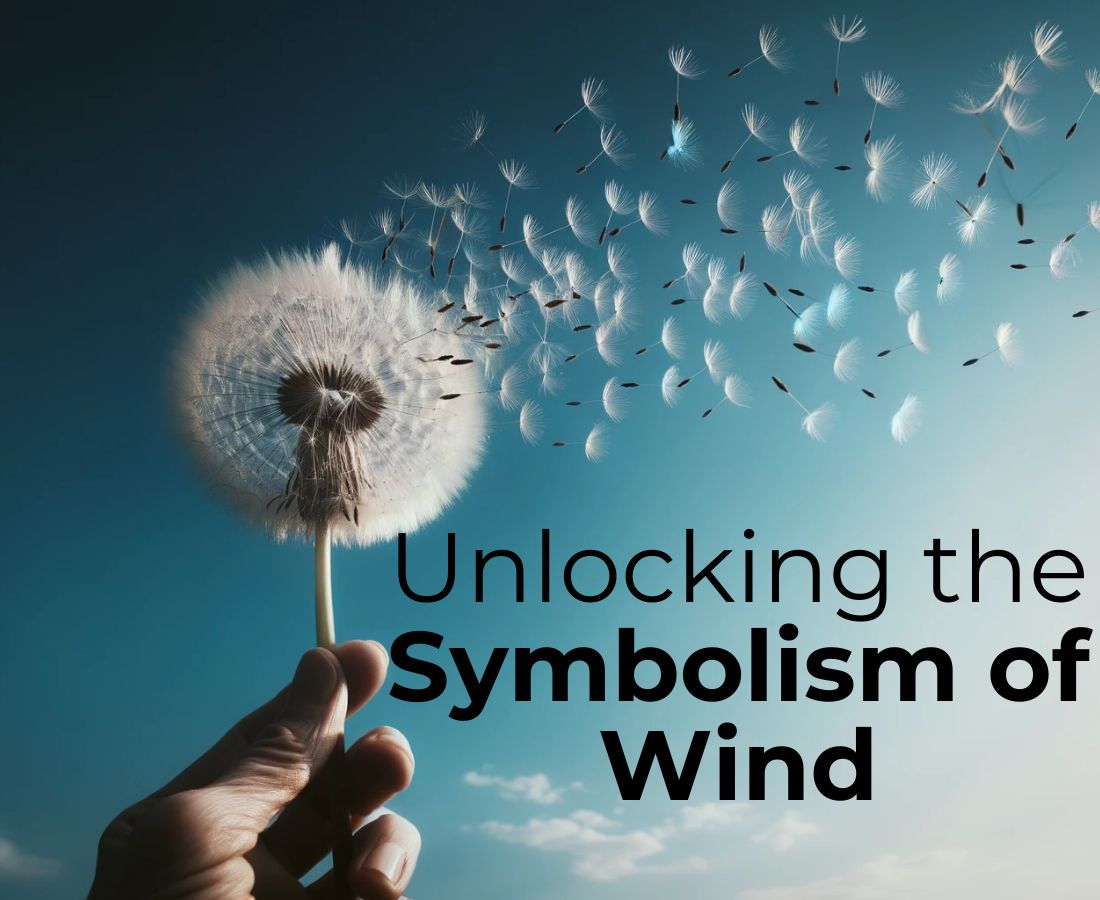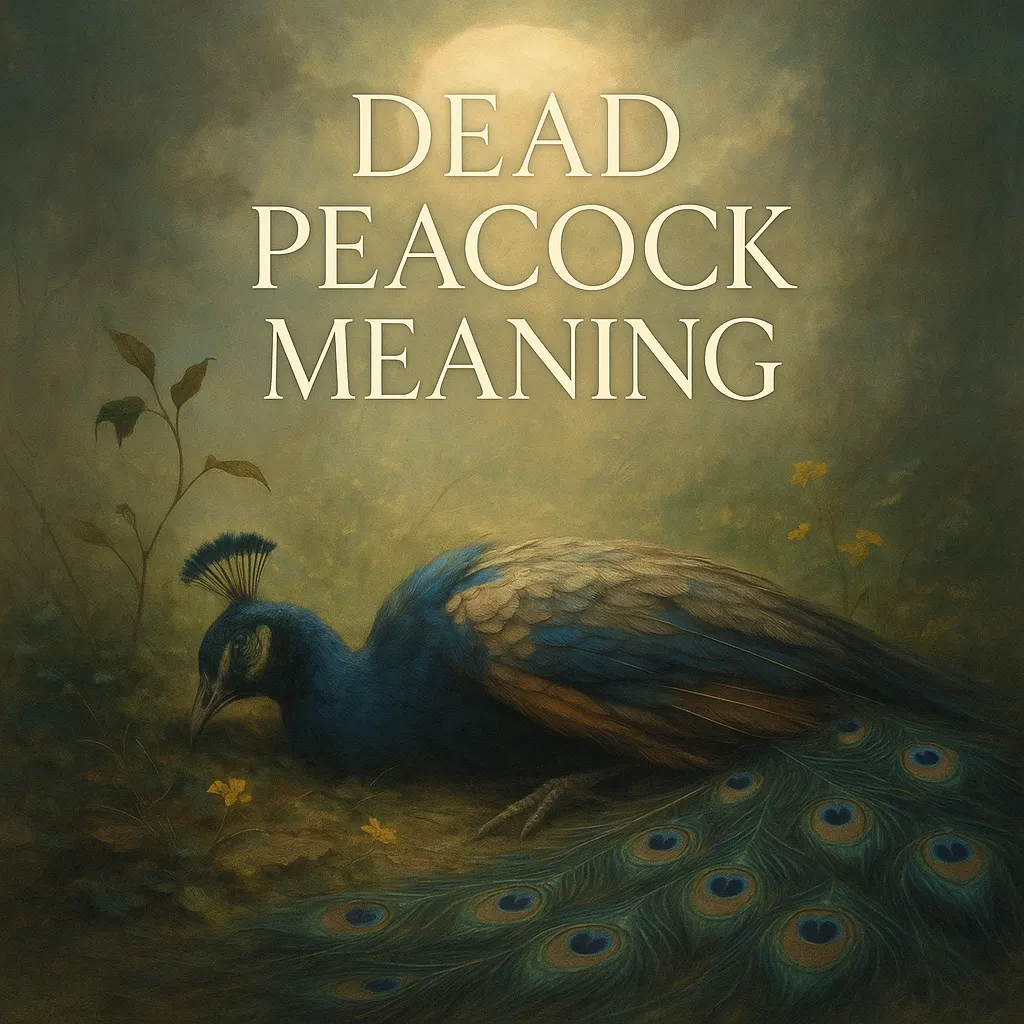The symbolism of the wind holds deep cultural and spiritual significance, touching upon diverse aspects of human life and imagination. Across different cultures, the wind is regarded as a powerful symbol that carries profound meanings. From religious contexts to literature and art, the wind’s symbolism is a rich tapestry of interpretations and associations.
Table of Contents
Key Takeaways
- The wind symbolizes God’s power, divine intervention, and the Holy Spirit in religious contexts, particularly in Christianity.
- Symbolic meanings associated with the wind include change, new opportunities, calmness, and destruction.
- The wind is depicted in various forms of creative expression, such as literature and art, where it serves as a metaphor or symbol.
- The wind is often associated with spiritual forces, representing unseen energies and the presence of spirits.
- The wind also serves as a metaphor for human life, symbolizing the breath of life, unseen forces at work, and the cyclical nature of existence.
The Wind in Religious Contexts
Within religious contexts, the symbolism of the wind carries profound meaning, representing the very essence of God’s power and intervention. In Christianity, the wind is closely associated with the Holy Spirit, signifying His invisible yet impactful presence in the lives of believers. Just as the wind cannot be seen but its effects are undeniable, the Holy Spirit’s work is often unseen but transformative.
In the Bible, the wind is frequently used prophetically to indicate God’s presence and divine action. It symbolizes the power and authority of God, as well as His ability to bring about change and new beginnings. The wind can also signify God’s judgment and the consequences of sin, serving as a reminder of His sovereignty and righteousness.
Furthermore, the wind is intricately linked to spiritual forces, angels, and the calling and assignments of individuals. It represents the breath of life, the unseen forces at work, and the cyclical nature of existence. The Bible mentions the four winds, symbolizing God’s sovereignty over the Earth and His influence in all directions. Each direction has its own symbolic significance, with the east wind associated with judgment and deliverance, the south wind representing peace and healing, and the north wind signifying terrain and the spreading of fragrance.
As believers navigate their spiritual journeys, the wind serves as a reminder of God’s presence, guidance, and transformative power. It represents the constant movement of the Holy Spirit in their lives, leading them to new opportunities, providing strength in times of trial, and bringing about spiritual growth and transformation. The symbolism of the wind in religious contexts underscores the deep spiritual meaning and significance it holds within various faith traditions.
| Wind Direction | Symbolic Significance |
|---|---|
| East Wind | Connected to judgment and deliverance |
| South Wind | Associated with peace and healing |
| North Wind | Signifies terrain and the spreading of fragrance |
Wind Symbolism in the Bible
In the Bible, the wind carries deep symbolism, representing God’s power, divine intervention, and the Holy Spirit. It can symbolize change, unseen forces at work, and the breath of life. The wind is often used prophetically to indicate God’s presence and work. It can also have negative connotations, symbolizing judgment and the consequence of sin.
| Symbolism | Meaning |
|---|---|
| Change | The wind symbolizes the transformative power of God, bringing change and new beginnings. |
| Unseen Forces | Just as the wind is invisible yet impactful, the wind symbolizes the invisible workings of God in our lives. |
| Breath of Life | The wind represents the breath of life, signifying God’s creation and sustenance of all living beings. |
| Judgment | In some instances, the wind symbolizes divine judgment and the consequences of sin. |
Overall, the symbolism of the wind is multifaceted, reflecting the complexities of life and the divine. It serves as a reminder of the ever-changing nature of the world and the profound forces that shape our existence.
The Wind in Different Cultures
The symbolism of the wind varies across different cultures, with each society attributing its own meanings and associations to this natural element. In Greek mythology, the wind is personified through the Anemoi, a collection of deities representing the cardinal directions and various types of winds. The Anemoi were believed to bring favorable or destructive winds, with each wind having its own distinct character and purpose.
| Culture | Symbolic Wind Representation |
|---|---|
| The Greeks (The Anemoi) | The Anemoi were revered as powerful beings who controlled the winds, influencing the weather and the fate of sailors at sea. |
| The Egyptians (Shu) | In Egyptian culture, the wind was personified as Shu, the god of the air and atmosphere. Shu was often depicted as a man holding up the sky, representing the life-giving force of the wind. |
| The Mesopotamians (Enlil) | The Mesopotamian culture attributed the wind to Enlil, the god of the air, wind, and storms. Enlil was seen as a powerful deity who controlled the weather and brought fertility to the land. |
| The Japanese (Fūjin) | In Japanese mythology, Fūjin was the god of wind and one of the eldest Shinto gods. Fūjin was often depicted as a terrifying figure with a bag of winds slung over his shoulder, symbolizing the unpredictable and destructive nature of the wind. |
| The Aztecs (Ehecatl) | The Aztecs revered Ehecatl as the god of wind and one of the oldest deities in their pantheon. Ehecatl was associated with life-giving qualities, representing the gentle breeze that brings rain and the harsh winds that bring storms. |
| The Slavs (Stribog) | In Slavic mythology, Stribog was the god of wind, air, and sky. Stribog was often portrayed as an elderly, wise man bringing winds and rain, symbolizing the changing seasons and the cycle of life. |
| The Finns (Ilmarinen) | For the Finns, wind symbolism was embodied in the god Ilmarinen, who symbolized creativity, craftsmanship, and the breath of life. Ilmarinen was believed to shape the world with his mighty bellows, blowing life into all creatures. |
Wind in Art
Artists have long been inspired by the many facets of the wind, creatively harnessing its essence to evoke emotion and convey powerful narratives. Through various mediums, the wind’s intangible presence and influence have been beautifully captured, reflecting both its gentle caresses and fierce tempests.
Paintings and Sculptures that Encapsulate Wind’s Essence
One of the most striking examples in the world of painting is Claude Monet’s “Woman with a Parasol,” where the subject’s flowing dress and tilted parasol vividly convey a brisk breeze. The very posture of the woman and her son demonstrates the wind’s direction and force, emphasizing Monet’s brilliance in capturing a fleeting moment.
In the realm of sculpture, Auguste Rodin’s “The Walking Man” showcases a figure in mid-motion, its rugged texture suggesting a resistance, as if battling a strong gust of wind, making the inanimate come alive with movement and purpose.
The Depiction of Wind in Visual Storytelling: Films and Animations
Film and animation vividly capture the wind’s impact on environment and character alike. In the film “Forrest Gump,” the feather that floats on the breeze at the beginning and end of the movie symbolizes the unpredictability of life and the wind’s guiding force. Similarly, in Studio Ghibli’s animation “Spirited Away,” the wind plays a significant role in setting the ambiance of the spirit world and reflecting the protagonist’s inner turmoil and growth.
| Type of Art | Piece of Art | Meaning | Interpretation |
|---|---|---|---|
| Painting | “Woman with a Parasol” by Claude Monet | Gentle Breeze | The lightness of the woman’s dress and the angle of the parasol depict a moment of fleeting serenity and beauty. The breezy day is captured in a snapshot of time, representing nature’s transient beauty. |
| Sculpture | “The Walking Man” by Auguste Rodin | Movement and Struggle | The rough texture and forward-leaning posture of the figure embody resistance, possibly against a force like the wind, symbolizing life’s challenges and our resilience. |
| Film | “Forrest Gump” | Unpredictability of Life | The floating feather, carried by the wind, signifies the random and unpredictable paths life can take, but also the beauty in those paths. |
| Animation | “Spirited Away” by Studio Ghibli | Spiritual Transformation | The varying intensities of wind in the animation signify the protagonist’s journey, from turmoil to self-discovery in the spirit world. |
| Photography | “A Sudden Gust of Wind” by Jeff Wall | Momentary Disruption | The photograph captures papers flying in mid-air and the startled reactions of the subjects, encapsulating a sudden, unexpected change, emphasizing life’s unpredictable and transient nature. |
Symbolic Meanings Associated with Wind
The wind encompasses a range of symbolic meanings, embodying both positive and negative aspects of human experience. It is a powerful force that can bring about change and new opportunities, yet it can also bring destruction and chaos. The symbolism of the wind is deeply rooted in various cultures and is often associated with the unseen forces at work in the world.
- Change: The wind is often seen as a symbol of change, representing the constant movement and transformation of life. Just as the wind can shift directions and intensity, so too can our circumstances and situations. It reminds us of the importance of embracing change and being adaptable.
- New Opportunities: The wind also represents the arrival of new opportunities. Just as the wind carries seeds to new places, it brings fresh possibilities and chances for growth. It encourages us to be open-minded and to seize the opportunities that come our way.
- Calmness: On the other hand, the wind can also symbolize calmness and tranquility, especially when it appears as a gentle breeze. It reminds us to find moments of peace and stillness amidst the chaos of life.
- Destruction: However, the wind can also bring destruction and devastation. Powerful gusts can uproot trees, destroy buildings, and disrupt lives. It serves as a reminder of the unpredictable and sometimes destructive nature of life.
“The wind blows where it wishes, and you hear its sound, but you do not know where it comes from or where it goes. So it is with everyone who is born of the Spirit.”
– John 3:8
The Wind and Spiritual Forces
The wind’s symbolism extends beyond the natural realm, intertwining with beliefs in spiritual beings and unseen forces. Across cultures, the wind has been associated with the presence of spirits and angels, signifying their influence and activity in the world.
In Christianity, the wind holds significant spiritual meaning, often representing the movements of the Holy Spirit. Just as the wind is invisible yet powerful, the Holy Spirit works quietly and behind the scenes, bringing about spiritual transformation and guidance in the lives of believers. The wind serves as a reminder of the unseen forces at work in our lives, guiding us on our spiritual journey.
In various spiritual traditions, the wind is believed to carry messages from the spiritual realm. It is seen as a conduit between the physical and supernatural worlds, connecting humans with divine wisdom and guidance. The wind’s unpredictable nature mirrors the mysterious and unpredictable ways of the spiritual forces, inviting us to embrace the unknown and trust in a higher power.
| Spiritual Tradition | Wind Symbolism |
|---|---|
| Christianity | Presence of the Holy Spirit, divine guidance |
| Native American | Messages from ancestors, spiritual guidance |
| Shintoism | Divine blessings, purification |
| Voodoo | Communication with spirits, manifestation of spirits’ power |
Throughout history, wind imagery has been used to convey the profound connection between the physical and spiritual realms. In literature and art, the wind is often depicted as a metaphor for the soul, representing the intangible aspects of human existence. It symbolizes the breath of life and the cyclical nature of existence, reminding us of our connection to something greater than ourselves.
Takeaway
The symbolism of the wind goes beyond its physical nature, encompassing spiritual beliefs and unseen forces. It serves as a reminder of the presence of higher powers and the interplay between the natural and spiritual worlds. Whether through religious contexts, artistic representations, or cultural traditions, the wind’s symbolism invites us to explore the deeper dimensions of our existence and embrace the mysteries of the spiritual realm.
The Wind as a Metaphor for Human Life
The wind, as a metaphor for life itself, carries profound implications for our understanding of human existence. Just as the wind is unseen but its effects are felt, the essence of life and its impact on individuals and society may not always be visible, yet it shapes our experiences and shapes the world around us. The symbolism of the wind speaks to the transient nature of life, its unpredictability, and its ability to bring both refreshing change and destructive storms.
In exploring the wind’s metaphorical significance, we can draw parallels to the breath of life. Just as the wind breathes life into the natural world, our breath sustains our physical being. The wind’s invisibility echoes the intangible aspects of life, such as emotions, thoughts, and dreams, which are deeply felt yet cannot be grasped or quantified. It reminds us of the unseen forces at work within us and the world, guiding our paths and shaping our destinies.
Wind symbolism also reflects the cyclical nature of existence. Just as the wind blows in various directions, life takes us on a journey of highs and lows, joys and sorrows. It reminds us that change is inevitable, and it is in embracing the ebb and flow of life that we find growth and resilience. The wind’s power to both nourish and destroy mirrors the capacity for transformation and renewal within ourselves.
Table: Symbolic Associations of the Wind in Human Life
| Symbolic Meaning | Implications |
|---|---|
| Change and Transformation | Life’s ever-evolving nature and the opportunity for personal growth and renewal. |
| Invisible Forces at Work | The intangible aspects of life, such as emotions, thoughts, and spirituality, that influence our experiences. |
| The Breath of Life | The vitality and sustenance of our existence, connecting us to the essence of being. |
| Cyclical Nature of Existence | Life’s continuous rhythm of ups and downs, reminding us of the impermanence of circumstances. |
| Destructive Power | The potential for adversity, challenges, and the need for resilience in the face of life’s storms. |
In contemplating the wind’s metaphorical significance, we gain a deeper appreciation for the complexities and mysteries of our own existence. It invites us to embrace the winds of change, to navigate the unseen currents with courage and adaptability, and to find solace in the belief that, like the wind, life’s purpose and meaning are intricately woven into the fabric of the universe.
Conclusion
The symbolism of the wind encompasses a rich tapestry of meanings, resonating across cultures and embodying deep spiritual and cultural significance. In various religious contexts, the wind is seen as a symbol of divine power, intervention, and the presence of the Holy Spirit. For Christians, the wind represents God’s mighty works and His guidance in their lives. It is often associated with prophecy, judgment, and the consequences of human actions.
The wind’s symbolism extends beyond religious beliefs, as different cultures interpret it in unique ways. From the Greeks’ personification of the wind as the Anemoi to the Egyptians’ association of wind with Shu, the god of air and wind, the wind carries diverse meanings in various traditions. In Japanese culture, the wind is embodied by Fūjin, the god of wind and one of the eldest Shinto deities. The Aztecs revere Ehecatl, the god of wind, as a powerful force of change.
The wind’s symbolic meanings also encompass a wide range of concepts, including change, new opportunities, calmness, and destruction. It serves as a metaphor for the breath of life and represents the unseen forces at work in the world. In literature and art, the wind is often used as a powerful symbol, adding depth and meaning to creative expressions. It evokes emotions, creates movement, and adds a sense of mystery and energy to artistic works.
Furthermore, the wind is intrinsically linked to spiritual forces and the calling of individuals. It is believed to carry messages from the divine realm and to be accompanied by angelic presence. The wind’s symbolic significance suggests the presence of spiritual warfare, anointing, and the unfolding of divine assignments. It is a reminder of the continual work of God in shaping and preparing individuals for their unique purposes.



